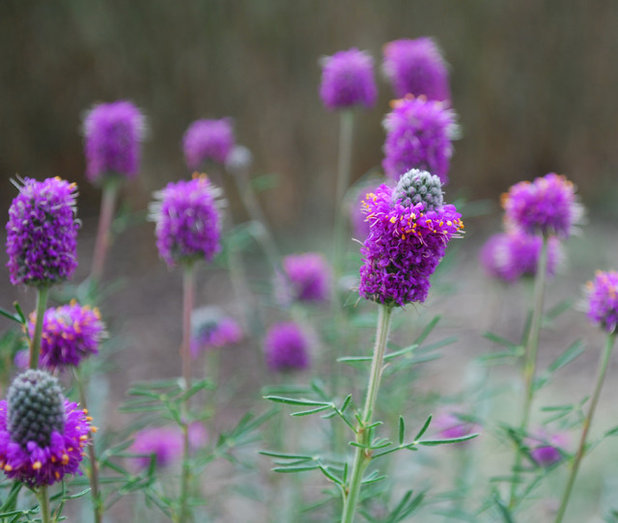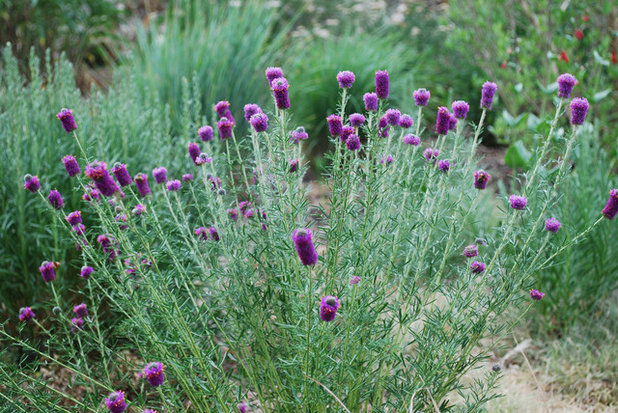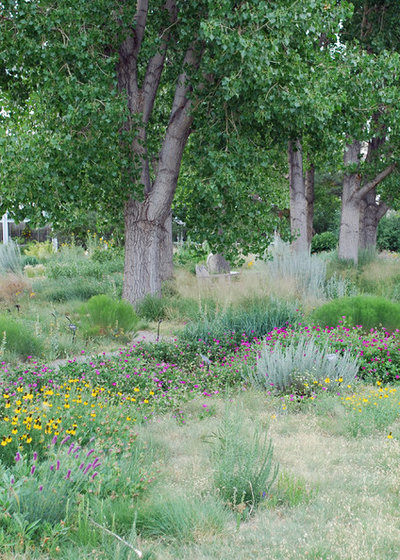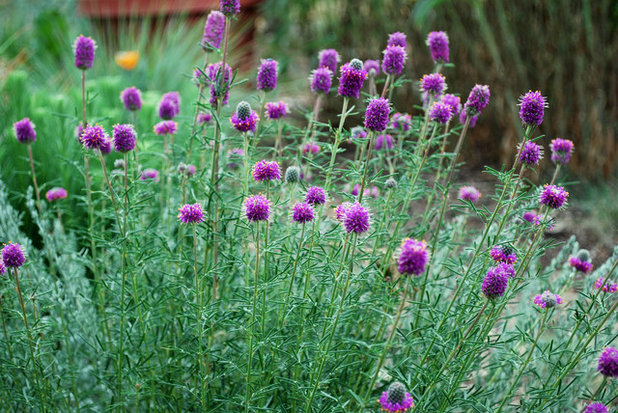Purple prairie clover (also known as violet prairie clover) is a showy, adaptable perennial native to a wide variety of prairie ecosystems across most of central North America, from Saskatchewan down through Texas. It’s not a true clover but rather a deep-rooted legume that fixes nitrogen in the soil, so planting this perennial is a beautiful way to add fertility to a naturalized garden area.

Jocelyn H. Chilvers
Botanical name: Dalea purpureaCommon name: Purple prairie clover
USDA zones: 3 to 9 (find your zone)
Water requirement: Low
Light requirement: Full sun
Mature size: 18 to 30 inches tall and wide
Benefits and tolerances: Long blooming; attracts bees and butterflies; tolerates full sun, drought and heavy clay soils
When to plant: Spring through fall
Seasonal interest: Blooms in late spring through summer

Jocelyn H. Chilvers
Distinguishing traits. Masses of showy, vibrant, violet-pink flower spikes offer a bold contrast to the delicate, lacy foliage. Many xeric plants feature gray-green or silver foliage; purple prairie clover’s is a refreshing deep blue-green. The plant form is an upright, rounded silhouette.

Jocelyn H. Chilvers
How to use it. Purple prairie clover is the perfect addition to any wildflower or meadow planting. Use it in bold drifts with native grasses and wildflowers — companion plants with silvery foliage or yellow flowers make for a nice contrast. Consider using fringed sage
(Artemisia frigida), blue gramma grass
(Buchloe dactyloides), Western blue spiderwort
(Tradescantia occidentalis) and Colorado four o’clock
(Mirabilis multiflora).

Jocelyn H. Chilvers
Planting notes. Plant purple prairie clover in full sun. Be thoughtful when choosing the location, because its deep taproot makes it difficult to move. The plant adapts well to most soils, including clay. Although it's fairly drought tolerant once established, it will benefit from supplemental water during extended dry periods.





